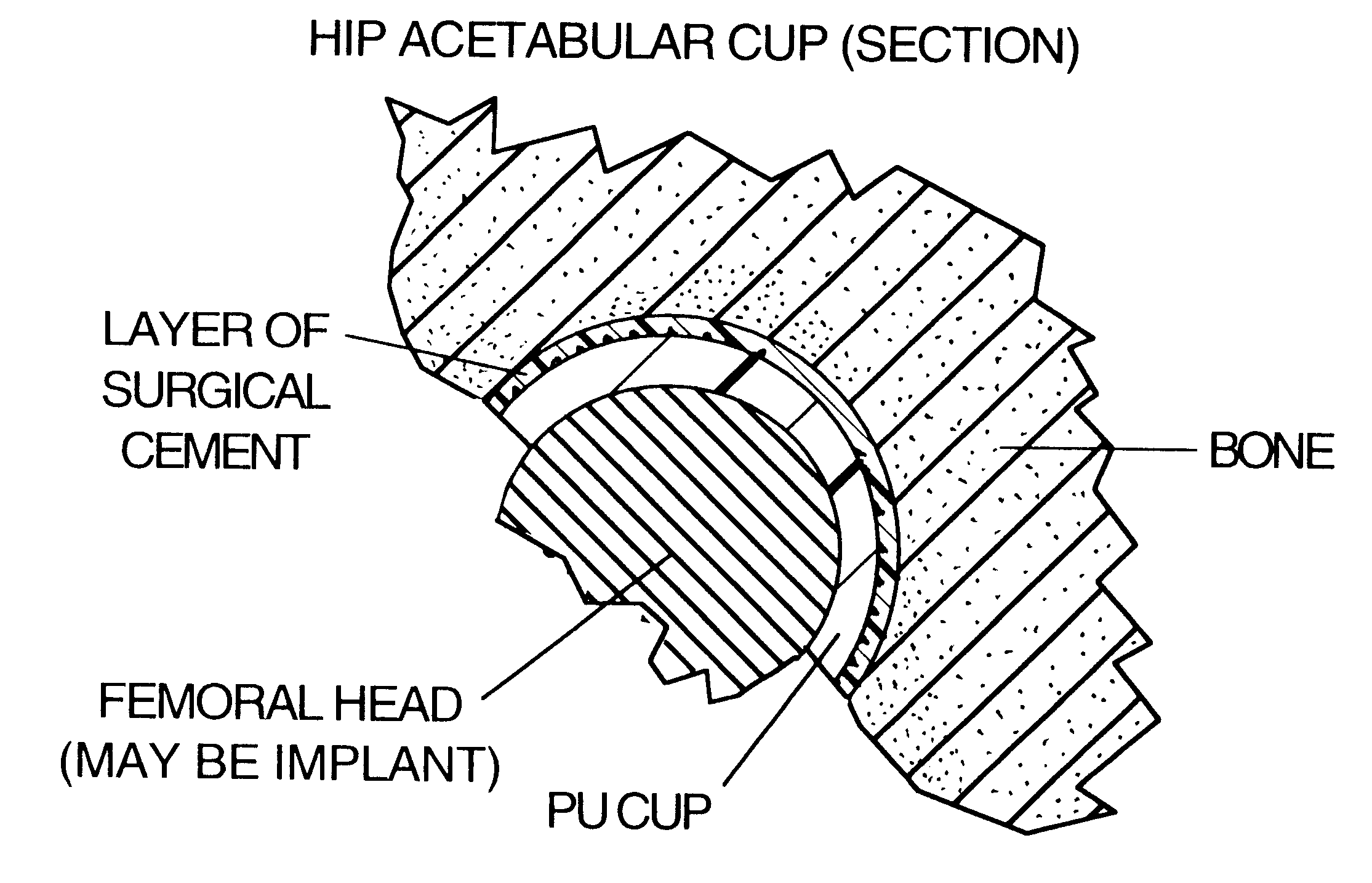Polyurethane and so forth containing joints
a technology of polyurethane and so on, which is applied in the field of polyurethanecontaining, load-bearing prosthetic joint implants, can solve the problems of premature failure of the procedure, proliferation of billions of wear particles per year, and exceptional vulnerability
- Summary
- Abstract
- Description
- Claims
- Application Information
AI Technical Summary
Benefits of technology
Problems solved by technology
Method used
Image
Examples
example set 2
Analogous to that which is set forth in Example Set 1, chemicals employed in Example Set 2 are listed in Table 10. Polyols and chain extenders were dried under a vacuum, and the isocyanates were employed as received from the suppliers. The isocyanate content, again, was determined by the di-n-butylamine method.
Prepolymer methods were employed, in general, which can use pressures about from 5,000-30,000 psi for curing test sheets, e.g., 20,000 psi. Results are reported in Tables 11-14. Mixtures of two polyols were effectively employed. Cross-linking (slight) was also effectively employed (e.g., Table 2, cols. 2 & 4). Compare, FIGS. 6-17.
TABLE 12
TABLE 13
TABLE 14
Results, accordingly, as persons skilled in the art would appreciate, were highly favorable, especially in comparison to UHMW-PE (which is compared at approximately the same hardness values, e.g., 66-69).
Such samples may be utilized to machine artificial joints such as depicted with FIG. 47. In particular, acetabular cups FIG. ...
example set 3
I. EXPERIMENTAL
Materials
The chemicals utilized in the elastoplastics preparation are shown in Table 15:
Preparation of Elastoplastics Based on PPDI / MDI / 1,4-BD / PTMO-Diols
Polyurethane elastoplastics were prepared using the two step prepolymer procedure. In the first step, PPDI-based NCO-prepolymers were prepared using a mixture of PTMO-1000 and PTMO650 polyols at 20 / 80 and 50 / 50 weight ratios. The prepolymer was prepared using the following procedure: PPDI(flaked) was placed in a 1-L glass reaction kettle which was equipped with a stirrer under a continuous flow of nitrogen. The PTMO-1000 / PTMO-650 polyol mixture (50 / 50 and 20 / 80 weight ratio) was heated to 60.degree. C. and added under mixing to the PPDI. The reaction exotherm temperature rose to 90.degree. C. and stayed there for about one hour. The theoretical NCO% was reached at that time. Afterwards, the temperature of the prepolymer started to decrease. In the second step, a specified amount of the prepolymer and free isocyanate (...
example set 4
From the foregoing monolithic, unreinforced (as by fiber) polyurethane elastomers of Example Sets 1-3, elastomeric plastic bars were prepared (FIG. 1). Machining trials demonstrated good machining property behavior of the polyurethane elastoplastics.
In particular, a set of demonstration knee tibial tray liners were machined by known methods (FIG. 47). Nothing out of the ordinary was encountered in the machining, and these knee joint component demonstration models performed in evaluations with satisfaction.
PUM
| Property | Measurement | Unit |
|---|---|---|
| temperature | aaaaa | aaaaa |
| temperature | aaaaa | aaaaa |
| elongation | aaaaa | aaaaa |
Abstract
Description
Claims
Application Information
 Login to View More
Login to View More - R&D
- Intellectual Property
- Life Sciences
- Materials
- Tech Scout
- Unparalleled Data Quality
- Higher Quality Content
- 60% Fewer Hallucinations
Browse by: Latest US Patents, China's latest patents, Technical Efficacy Thesaurus, Application Domain, Technology Topic, Popular Technical Reports.
© 2025 PatSnap. All rights reserved.Legal|Privacy policy|Modern Slavery Act Transparency Statement|Sitemap|About US| Contact US: help@patsnap.com



